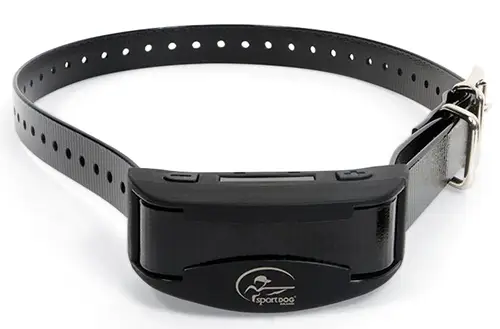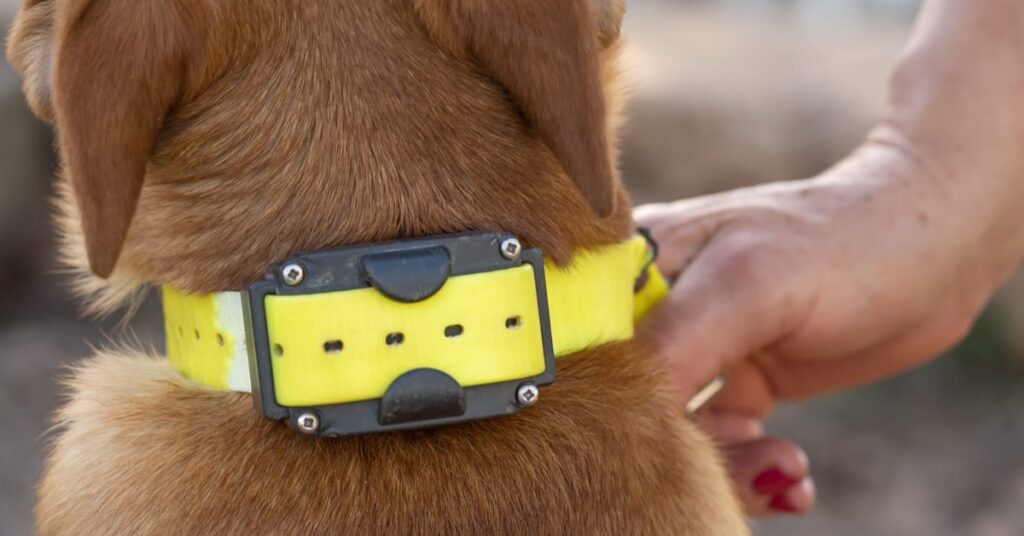Do Bark Collars Work on French Bulldogs?

Introduction to Bark Collars
Bark collars are devices designed to deter excessive barking in dogs. They come in various forms, including shock collars, spray collars, and vibration collars. These collars work by either emitting a stimulus or correction when they detect barking behavior.
French Bulldogs’ Behavior

French Bulldogs, similar to many other dog breeds, are prone to barking due to various reasons. Understanding their behavior is essential when assessing the efficacy of bark collars.
Temperament
French Bulldogs are recognized for their affectionate and playful demeanor, yet they can also display stubbornness. How they react to bark collars can differ based on their temperament and sensitivity.
Barking Triggers
Frenchies may bark out of boredom, anxiety, territorial instincts, or simply to seek attention. Recognizing the specific triggers for their barking can aid in determining the appropriate training methods and collar usage.
Types of Bark Collars

There are several varieties of bark collars available, each with its mode of operation.
Shock Collars
These collars administer a mild electric stimulation when activated by barking. While effective for some dogs, others may find the sensation uncomfortable or distressing.
Spray Collars
When triggered by barking, spray collars release bursts of citronella or other scents. The scent serves as a distraction, deterring further barking without causing any harm.
Vibration Collars
Emitting a gentle vibration or buzzing sensation upon barking, vibration collars interrupt the barking pattern and redirect the dog’s attention.
Success Stories and Challenges
While some owners of French Bulldogs may have witnessed success in reducing excessive barking with bark collars, others may encounter obstacles.
Success Stories
Owners who have effectively utilized bark collars often attribute their success to consistent training, appropriate collar selection, and patience.
Challenges
However, some French Bulldogs may not respond favorably to bark collars or could experience heightened anxiety or stress. Factors such as incorrect collar fit or inconsistent training techniques can also impact effectiveness.
In summary, the effectiveness of bark collars on French Bulldogs is influenced by various factors, including individual temperament, collar type, and training methods. While bark collars can serve as valuable tools in managing excessive barking, they should be employed with care and in conjunction with positive reinforcement techniques. Understanding the unique behavior and needs of your French Bulldog is essential in determining the most suitable approach to barking management.
Positive and Negative Impacts of Bark Collars

Positive Impacts:
Behavior Modification: Bark collars can effectively train dogs to reduce excessive barking by associating the behavior with an unpleasant stimulus, such as a mild static shock or citronella spray. Over time, dogs may learn to control their barking habits.
Improved Neighbor Relations: Excessive barking can be a nuisance to neighbors, leading to complaints and strained relationships. Bark collars can help mitigate this issue, promoting better relations with neighbors and a more harmonious living environment.
Safety Enhancement: Excessive barking may distract dogs from potential dangers or emergencies, such as approaching vehicles or aggressive animals. By reducing barking, bark collars can help ensure that dogs remain attentive to their surroundings, potentially enhancing their safety.
Negative Impacts
Stress and Anxiety: Bark collars that utilize aversive stimuli such as shocks or sprays can cause stress and anxiety in dogs. This may lead to adverse behavioral effects, including fearfulness, aggression, and learned helplessness.
Inhibition of Natural Behavior: Barking is a natural form of communication for dogs, and excessive barking may indicate underlying issues such as boredom, loneliness, or anxiety. Bark collars may suppress this natural behavior without addressing the root cause, potentially exacerbating underlying issues.
Risk of Misuse: Improper or excessive use of bark collars can lead to unintended consequences, including physical harm to the dog or exacerbation of behavioral problems. Without proper training and supervision, owners may inadvertently misuse bark collars, resulting in negative outcomes for the dog.
Legal and Ethical Considerations: In some regions, the use of bark collars may be subject to legal restrictions or regulations. Additionally, there are ethical considerations regarding the use of aversive training methods and the potential impact on the welfare of dogs.
Overall, while bark collars can be effective in reducing excessive barking, it’s essential to consider their potential impacts on the well-being and behavior of dogs, as well as alternative training methods that prioritize positive reinforcement and address underlying behavioral issues.
Training Methods for French Bulldogs:

French Bulldogs are intelligent and affectionate companions, but like all dogs, they benefit from proper training to become well-behaved members of the family. Here are some additional training methods specifically suited for French Bulldogs:
Clicker Training
Clicker training is a form of positive reinforcement that uses a clicker device to mark desired behaviors, followed by a reward. French Bulldogs respond well to this method because it provides clear communication and instant feedback. With consistent clicker training, you can effectively teach your French Bulldog new commands and behaviors.
Chew Toy Training
French Bulldogs have a natural inclination to chew, which can sometimes lead to destructive behavior if not managed properly. Incorporate chew toy training into your routine by providing your French Bulldog with a variety of appropriate chew toys and rewarding them for chewing on them instead of household items. This helps positively redirect their natural chewing instincts.
Interactive Games
French Bulldogs enjoy mental stimulation and thrive on interactive games that challenge their problem-solving skills. Incorporate games such as hide-and-seek, puzzle toys, or scent games into their training regimen to keep them mentally engaged and stimulated. Not only does this provide valuable mental exercise, but it also strengthens the bond between you and your French Bulldog.
Patience Training
French Bulldogs can be prone to stubbornness at times, so patience training is essential. Teach your French Bulldog patience by gradually increasing the duration of commands such as “stay” or “wait.” Start with short intervals and gradually extend the time as your French Bulldog becomes more comfortable and patient. This helps instill self-control and impulse management.
Desensitization Training
French Bulldogs can be sensitive to certain stimuli, such as loud noises or unfamiliar objects. Desensitization training involves gradually exposing your French Bulldog to these stimuli in a controlled and positive manner to reduce fear or anxiety. Start with low-intensity exposure and gradually increase the intensity as your French Bulldog becomes more comfortable and confident.
Consistent Routine
French Bulldogs thrive on routine and structure, so establish a consistent daily routine for training sessions, feeding times, exercise, and rest. Consistency helps your French Bulldog feel secure and confident, making training more effective and enjoyable for both of you.
Redirecting Undesirable Behaviors
Instead of punishing undesirable behaviors, such as jumping or excessive barking, focus on redirecting them toward more appropriate behaviors. For example, if your French Bulldog jumps on guests, teach them to greet visitors politely by sitting or offering a paw. Use positive reinforcement to reward and encourage these alternative behaviors.
By incorporating these training methods into your French Bulldog’s routine with patience, consistency, and positive reinforcement, you can help them develop into well-behaved and happy companions. Remember to keep training sessions enjoyable for both you and your French Bulldog to foster a strong bond built on trust and mutual respect.
Alternatives to Bark Collars

Positive Reinforcement Training
Positive reinforcement training is a method based on rewarding desired behaviors with treats, toys, or verbal praise. When your dog exhibits quiet behavior, such as not barking in response to a trigger, immediately reward them to reinforce the behavior. This can be done by using a marker word like “yes” or “good” followed by a treat or a toy. Over time, your dog will learn that being quiet leads to positive outcomes, making them more likely to repeat the behavior.
Environmental Management
Environmental management involves identifying and addressing the underlying causes of your dog’s excessive barking. This may include providing more mental and physical stimulation through interactive toys, increased exercise, and enrichment activities. Additionally, minimizing exposure to environmental triggers such as loud noises or separation anxiety can help reduce barking. For example, if your dog barks at passersby outside the window, consider closing the blinds or moving them to a quieter area of the house.
Training and Behavior Modification
Working with a professional dog trainer or behaviorist can help develop a customized training plan to address your dog’s barking behavior. This may involve teaching alternative behaviors to replace barking, such as “quiet” or “go to your mat.” Through consistent training and positive reinforcement, your dog can learn appropriate ways to communicate and manage their barking.
Anti-Bark Devices
Alternative anti-bark devices use non-aversive methods to deter barking. These may include ultrasonic devices that emit high-frequency sounds only audible to dogs, citronella spray collars that release a burst of citronella scent, or vibration collars that provide a gentle vibration to interrupt barking. These devices can be effective for some dogs, but it’s important to use them appropriately and in conjunction with positive reinforcement training.
Medication and Supplements
In cases where excessive barking is a symptom of underlying medical issues or anxiety disorders, medication or supplements may be helpful. Consult with your veterinarian to rule out any medical causes and discuss options for calming your dog’s anxiety and reducing barking.
Management Techniques
Implementing management techniques can help prevent situations that trigger excessive barking. This may include using barriers to block your dog’s view of stimuli that provoke barking, providing distractions such as puzzle toys or chew treats, or using calming pheromone diffusers or sprays in your home.
By incorporating these alternatives to bark collars and addressing the root causes of your dog’s excessive barking, you can help them learn to communicate more effectively and reduce unwanted barking behavior.
Tips for Using Bark Collars Safely

Proper Fit
Ensure that the bark collar fits your dog correctly. It should be snug but not too tight, allowing for comfortable movement and breathing. Check the manufacturer’s guidelines for sizing and adjustment instructions, and regularly inspect the fit to prevent any discomfort or chafing.
Gradual Introduction
Introduce the bark collar to your dog gradually to allow them to acclimate to wearing it. Start by having your dog wear the collar for short periods while supervised, gradually increasing the duration over time. Use positive reinforcement techniques, such as treats and praise, to create a positive association with the collar.
Supervision
Always supervise your dog when they are wearing a bark collar, especially during the initial stages of use. Monitor your dog’s behavior and reactions to ensure they are not experiencing any distress or discomfort. Remove the collar immediately if you notice any signs of irritation or stress.
Limit Use
Use the bark collar only as needed and avoid leaving it on your dog for extended periods, especially when they are unsupervised. Continuous or prolonged use of bark collars can lead to skin irritation, sores, and potential behavioral issues. Remove the collar when your dog is resting or engaging in activities where barking is not a concern.
Regular Checks
Regularly inspect the bark collar and your dog’s skin for any signs of irritation, redness, or discomfort. Check the fit of the collar and adjust as necessary to prevent rubbing or pressure points. Clean the collar and contact points regularly to remove dirt, debris, and sweat buildup that can contribute to irritation.
Follow Instructions
Always follow the manufacturer’s instructions for proper use and maintenance of the bark collar. This includes guidelines for fitting, adjustment, charging (if applicable), and cleaning. Using the bark collar incorrectly or deviating from the recommended guidelines can increase the risk of adverse effects and compromise your dog’s safety and well-being.
Consider Alternatives
Before resorting to a bark collar, consider alternative methods for addressing your dog’s excessive barking. Positive reinforcement training, environmental management, and behavior modification techniques can often be effective without the need for aversive tools. Consult with a professional dog trainer or behaviorist for personalized guidance and support.
By following these tips for using bark collars safely, you can help ensure that your dog’s barking is effectively managed while prioritizing their comfort and well-being. Always prioritize positive reinforcement and humane training methods in your efforts to address excessive barking.
Conclusion
While bark collars can be a useful tool in managing excessive barking in French Bulldogs, they should be used cautiously and in conjunction with other training methods. Understanding the needs and behavior of your dog is key to finding the most effective and humane approach.
FAQs
Are bark collars safe for French Bulldogs?
Bark collars can be safe when used correctly and under supervision. However, it’s essential to consult with a professional before using one on your French Bulldog.
Can bark collars harm my French Bulldog?
Improper use of bark collars, such as using excessive force or leaving them on for too long, can potentially harm your French Bulldog. It’s crucial to follow manufacturer guidelines and seek advice from experts.
Do all French Bulldogs respond well to bark collars?
Every dog is unique, and while some French Bulldogs may respond positively to bark collars, others may not. It’s essential to consider your dog’s temperament and individual needs before using one.
Are there any alternative methods to bark collars for controlling barking in French Bulldogs?
Yes, there are various alternative methods, including positive reinforcement training, behavioral modification, and environmental changes, that can help address excessive barking in French Bulldogs.
How long does it take for bark collars to be effective?
The effectiveness of bark collars can vary depending on factors such as the dog’s temperament and the consistency of training. It may take some time for your French Bulldog to adjust to the collar and for you to see results.


